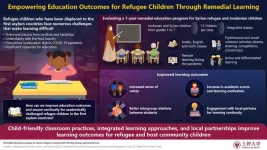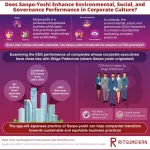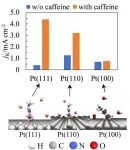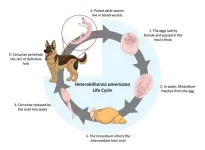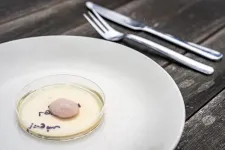“Public funding for global health R&D is small, relative to the incredible returns it provides for fighting neglected and emerging diseases like malaria, HIV, tuberculosis, Ebola and COVID-19 — and for stocking the pipeline with many promising new technologies,” said Dr. Kristie Mikus, GHTC’s executive director. “The innovations emerging from this work are important for advancing health and opportunity globally and for addressing America’s increasing vulnerability to infectious diseases.”
Dr. Nick Chapman, CEO of PCR, said, “Our analysis shows that the $46 billion invested by the U.S. government between 2007 and 2022 has not only delivered a steady stream of new drugs, vaccines and prevention tools, but has also supported basic research that is expected to attract an additional $102 billion investment from industry.”
The report, Doing Well by Doing Good, looks at the return on investment from federal funding for global health R&D that flows through agencies such as the National Institutes of Health, Biomedical Advanced Research and Development Authority, the U.S. Agency for International Development, and the U.S. Centers for Disease Control and Prevention. This funding helps to support work targeting historically neglected diseases such as malaria, HIV and tuberculosis (TB); more recently emerging threats that include COVID-19, Ebola, chikungunya and mpox; and sexual and reproductive health issues. The report notes that new tools are urgently needed because these challenges cause a massive loss of life around the world, impede economic progress in low- and middle-income countries, and pose a growing threat to Americans — especially with climate change facilitating the spread of disease.
For example, in the fight against neglected and emerging infectious diseases (other than COVID-19), the report found the funding contributed to the development of 67 new health technologies that have been approved since 1999. This includes 12 new products for fighting Ebola, which continues to spark new outbreaks; 12 for TB, a resurgent disease fueled by an alarming spread of drug-resistant strains; and 11 for malaria, which is once again on the rise globally and recently caused a surprising spate of locally acquired cases in the U.S.
The report found the investments also are supporting a product development pipeline for neglected and emerging diseases that now includes 261 promising innovations in late-stage development. Many carry the potential to deliver major benefits in reducing the human and economic toll of these threats.
New global health tools now available or close to fruition that benefited from recent U.S. government investments include:
A new drug, pretomanid, whose addition to a treatment regimen for TB has dramatically improved outcomes and reduced costs for treating patients infected with drug-resistant strains of the disease. Switching all patients with drug-resistant TB to pretomanid-based regimens could generate global health care cost savings of $740 million annually.
Two new long-acting HIV prevention options have the potential to transform global HIV prevention efforts by offering an alternative to daily pills for at-risk groups. Long-acting cabotegravir, delivered via a single bi-monthly injection, could avert 45% of new infections in the U.S. and up to 28% of potential future HIV infections in low- and middle-income countries. The dapivirine vaginal ring, a monthly product offering discreet protection, is another breakthrough option for use by women at high risk of infection.
The U.S. government’s multi-agency Operation Warp Speed supported development of four COVID-19 vaccines that have since been deployed around the world. These vaccines contributed to saving 14.4 million lives in the first year of the pandemic alone. Also, between December 2020 and March 2022, they played a prominent role in the estimated $895 billion in direct health care costs savings linked to vaccination.
Powerful new monoclonal antibodies or mAbs have emerged for fighting Ebola and malaria. Two approved mAbs for treating Ebola were found to significantly decrease mortality, to 11% for one of the drugs and 6% for the other, compared to 54% in untreated patients. Meanwhile, three promising mAbs for preventing malaria are in clinical development. There is already evidence for one of these mAbs indicating a potential to reduce infections by 54%–75% in communities where malaria emerges as a seasonal threat.
The report also notes that U.S. investments in global health R&D are delivering considerable economic benefits globally and domestically.
From 2007 to 2022, U.S. funding supported R&D capacity and product manufacturing capabilities in 43 low- and middle-income countries along with health innovations that can reduce the financial burden of neglected and emerging infectious diseases. For example, in countries where malaria is common, new drugs and vaccines can dramatically reduce the costs of managing the disease, which can consume up to 8% of a family’s budget and reduce national GDP by 1.3%.
In the United States, the report estimates that from 2007 to 2022, the $46 billion in public spending on global health R&D created 600,000 new jobs, generated $104 billion in economic activity and supported basic research endeavors that are on track to catalyze $102 billion in additional industry investments. And it’s the gift that keeps on giving. By supporting basic research that will continue to inspire health innovations for years to come, the report finds that it’s likely the $46 billion in public funding ultimately will generate $255 billion for the American economy — a six-fold return on investment. (A companion analysis from GHTC available here explores the funding impact on a state-by-state level, which includes stimulating tens of thousands of jobs in top research states like Maryland, Massachusetts, California, Virginia, North Carolina, Washington state, New York, New Jersey, Pennsylvania and Georgia.)
The report points out that Americans also benefit because funding for global health R&D is delivering tools for threats that are increasingly viewed as potential domestic risks. For example, the report notes that climate change is facilitating the spread of insect-borne pathogens into the continental U.S., including Chagas disease, dengue, Zika, chikungunya and malaria.
“The irony is that despite producing blockbuster returns, public funding for global health R&D is not keeping pace with growing needs and rising risks,” said Dr. Mikus. “R&D funding for emerging threats largely has been reactive — mainly focused on emergencies like Ebola, Zika and COVID-19 — and R&D budgets for neglected diseases actually dropped 11% in 2022. We encourage policymakers to look at global health R&D as one of the best investments a government can make, right up there with roads, schools and national defense.”
###
About the Global Health Technologies Coalition
The Global Health Technologies Coalition (GHTC) works to save and improve lives by encouraging the research and development of essential health technologies. We bring together more than 45 nonprofit organizations, academic institutions, and aligned businesses to advance policies to accelerate the creation of new drugs, vaccines, diagnostics, and other tools that bring healthy lives within reach for all people.
About Policy Cures Research
Policy Cures Research is an independent, not-for-profit, research and policy organisation providing strategic analysis and decision-making tools for those involved in the creation of new health technologies for neglected diseases, emerging infectious diseases and sexual & reproductive health issues. Its focus is on providing governments, funders, researchers and civil society organisations with the insights they need to make optimal R&D policy and funding decisions for diseases affecting the world’s most vulnerable populations.
END

